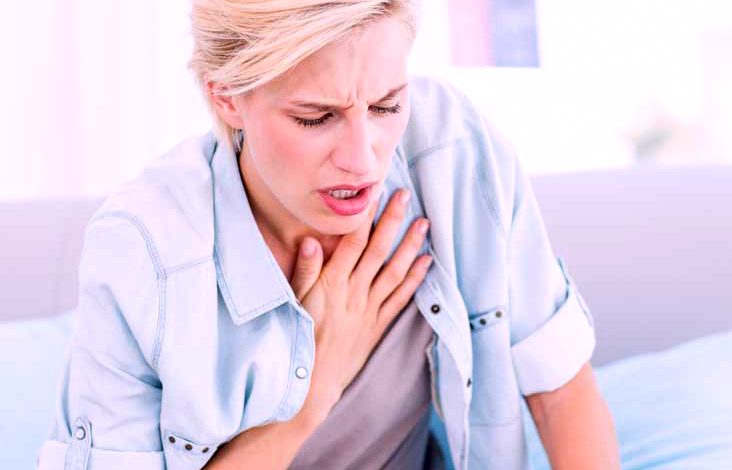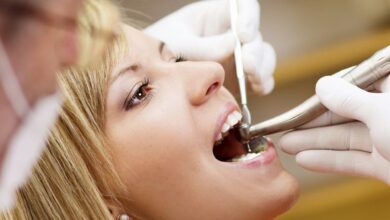A complete guide to Chronic Obstructive Pulmonary Disease (COPD)

Chronic Obstructive Pulmonary Disease (COPD) affects the lungs and causes breathing difficulties. It is common among middle-aged to older people. Due to its slow progression, many people tend to ignore the symptoms or relate them to aging.
Breathing problem is one of the most basic and most recognizable signs of COPD. Even if you have the slightest trouble catching your breath, it’s best to consult a Pulmonologist in Lahore and get a proper diagnosis.
Types of COPD
Chronic Obstructive Pulmonary Disease or COPD is a broad term that covers two diseases. They include:
Chronic Bronchitis
Bronchitis irritates and inflames the primary airway of the lungs and is common in smokers. Its signs include cough, dark-colored mucus, sore throat, and chest wheezing. In acute bronchitis, these symptoms may subside in two to three weeks. Contrarily, in chronic bronchitis, these symptoms may last for more than three months. Moreover, chronic bronchitis can also make it difficult to breathe.
Emphysema
This chronic lung condition damages the air sacs in the lungs known as alveoli. Smoking is also one of the main factors causing this disease. It ruins the walls inside the air sacs, decreasing the surface area of the lungs and obstructing the oxygen flow to the bloodstream. It lessens the stretching ability of the lungs, which leads to breathing difficulties.
Many health experts argue that asthma should be classified under COPD as well. However, it hasn’t as yet. The reason being, smoking is usually the root of COPD types, whereas asthma triggers are allergens.
COPD Symptoms
Initial COPD symptoms may be hardly noticeable; hence many people are unaware that they have the disease. These symptoms are persistent and can worsen if people with this disease don’t quit smoking.
Early Symptoms of COPD:
Persistent cough
Wheezing
Pressure on the chest
Recurring respiratory infections
Breathing difficulties, especially after physical exertion
As the disease progresses, your symptoms may get worse and also include:
Weight loss
Swelling in the feet, ankles, or legs
Fatigue
Causes and Risk Factors of COPD
One of the top causes of COPD is exposure to lung irritants. Such as smoke and fumes. COPD is more common in people above the age of 40. Those who have a history of smoking are more likely to develop COPD as they age. Smoking excessively or consuming second-hand smoke may increase the risk of COPD.
That’s not all. People who work in places where they exhale dangerous chemicals and fumes may also develop occupation-induced COPD. Long-term exposure to dust and air pollution is also a cause of this disease. Asthmatic patients are at risk of developing COPD as well, particularly if they smoke too.
In rare cases, COPD may be genetic. Genetic deficiency of the protein alpha-1-antitrypsin can damage the lungs.
How is COPD diagnosed?
To diagnose COPD, you will need to consult a doctor and tell them your symptoms.
Things your doctor should know:
Family history of COPD
Smoking (First or second hand)
Smoking history (ex-smokers)
Occupational inhalation of lung irritants
Asthma or other respiratory conditions
Frequency of respiratory symptoms
Any over-the-counter medications that you take.

Tests for diagnosis
For final diagnosis, the doctor may check your breathing with a stethoscope. Depending on that, they may order the following tests:
Spirometry
A non-invasive test that evaluates lung function is called spirometry. In this test, you will have to breathe into a machine called the spirometer. It will measure the amount of air you exhale in a second and the total quantity of air you breathe out.
Imaging tests
These tests can include a CT Scan and X-ray. An X-ray will be able to detect the condition of your lungs, chest infections, or other severe damages to the lungs. Similarly, through a CT scan, the doctor will be able to get a complete picture of your lungs.
Arterial blood gas test
The ABG test requires a blood sample from one of your arteries. It determines the oxygen level in your blood and the amount of carbon dioxide that you exhale.
Other lab tests
Doctors may also order tests to check deficiency to check if it’s genetic. Additionally, your doctor may ask for other tests to determine any chest infections or heart problems, as these are common among COPD patients.
Is COPD treatable?
COPD is not curable, but it is manageable. Doctors can treat the symptoms to slow the progression of the disease. In case COPD is caused by smoking, a Pulmonologist in Islamabad may advise quitting smoking. Discontinuing your smoking habit is a favor that you’ll be doing to yourself. Especially for those suffering from COPD.
Medical treatments for COPD
Treatment options for COPD include:
· Corticosteroids
These are steroids that can be taken orally or through inhalation. They help lessen the inflammation of the airways.
· Bronchodilators
This medication relaxes the lungs’ muscles by widening them, making it easier to breathe. They can be taken as pills or through inhalers.
· Inhalators
As lung diseases cause shortness of breath, your doctor may prescribe inhalers if the condition worsens. Depending on the state of the patient, the doctor may prescribe short or long-acting inhalers.
· Antibiotics
Antibiotics are another medical treatment for chest infections that may occur in COPD patients. An antibiotic course may be required when patients have a chronic cough, breathlessness, or a color change in the mucus.
· Pulmonary rehabilitation
Pulmonary rehabilitation is a program specially designed for people with lung problems, one of which is COPD. It acts as a support group for those with lung conditions. It includes exercise training, education about the illness. Dietary counseling, and moral support. The program usually takes up to 6 weeks that have more than 2 group sessions every week.
· Oxygen therapy
In cases where the low blood oxygen level makes it difficult for you to breathe, oxygen therapy is an option. It requires breathing through an oxygen mask or nasal tubes. It isn’t a treatment for COPD symptoms. Such as breathing problems. The therapy helps maintain the oxygen level in the blood so that it doesn’t get low to a dangerous level.
· Surgery
Surgery is for those patients with severe symptoms that don’t get better with the conservative treatments mentioned above. Surgeries for COPD include:
1. Bullectomy
Bullectomy involves removing an air pocket from your lungs to make them work better and help you breathe.
2. Lung Volume Reduction Surgery
This surgical procedure involves removing the damaged lung tissue to improve your breathing.
3. Lung transplant
A transplant is an option when organs do not remain very viable and functional. In severe cases where lungs are severely damaged. Lung transplantation can be the only solution. It requires removing the damaged lung from the patient and being replaced by a healthy and viable lung from a compatible donor. In these instances, the donor is usually recently deceased.
Coping with COPD
Living with COPD requires you to take extra care of yourself, as there is no definitive cure for it as yet.
If you have COPD, here are some steps you can take to make your life easier:
Take medication
Avoid lung irritants
Stay active and healthy
Try breathing exercises
Get checked regularly
Get vaccinated
Living and coping with COPD may be difficult, but it isn’t impossible. Slight changes in lifestyle and quitting smoking can make it easier for you to live with this disease.





